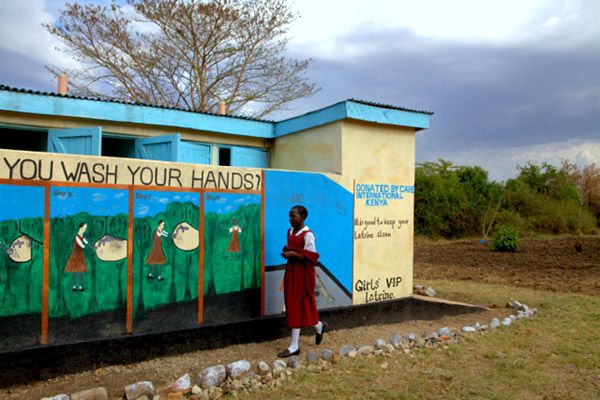November 18, 2019
Recognizing Our Toilet Privilege on World Toilet Day
November 19th is recognized by the United Nations as “World Toilet Day,” a day dedicated to the eradication of the global sanitation crisis and fulfilling the world population’s human right to access to sanitation. World Toilet Day was started by philanthropist Jack Sim from Singapore after recognizing the need for conversation and a global organization focused on the sanitation crisis.
The sanitation crisis affects about 4.2 billion people worldwide — more than half the world’s population. Over 673 million people still practice open defecation worldwide, and at least 2 billion people actively use a water source contaminated with feces. Additionally, according to the National Center for Biotechnology Center (NCBI), at least 1.77 billion people use “pit-toilets” as their primary means of relieving themselves.
The use of pit toilets or latrines is one of the largest contaminants of water for those who utilize them. The NCBI illustrates this by explaining that “…pit latrines usually lack a physical barrier to keep waste contained in the pit, microbial and chemical contaminants can emanate from them, threatening nearby groundwater sources such as springs, wells, and boreholes.” The use of pit latrines makes it easy to pollute nearby water supplies, making clean water harder to come by.
Unfortunately, the issues do not stop there. The pollution of feces in nearby water sources due to pit latrines can lead to many different types of diseases, waterborne or otherwise. The most notable diseases that come from contaminated water are diarrheal diseases. Diarrheal diseases claim the lives of 525,000 children every year, according to the World Health Organization. And, according to UNICEF, “800 children [under the age of 5] die every day from preventable diseases caused by poor water, and a lack of sanitation and hygiene.”
Pit toilets are not the leading cause of improper hygiene practices around the globe– improper sanitation is the result of communities lacking such things as functioning toilets, sinks, and plumbing as a whole. But what do all of these utilities have in common? They all need reliable clean water to function.

Clean water is the catalyst for healthy living. The main goal of National Toilet Day is to achieve Sustainable Development Goal 6 (SDG 6). The objective of SDG 6, laid out by the United Nations, is to provide proper sanitation and clean for all by the year 2030. By providing sources of clean water, without risk of fecal contamination, to communities that lack it, we can make a big dent on the global hygiene crisis. That’s what National Toilet Day is all about. One of the most impactful ways that we have made progress worldwide on these issues is through WASH practices.
WASH stands for Water, Sanitation, and Hygiene. Here at Well Aware, we’re no stranger to WASH practices. When we implement a new water project anywhere, we train the community on proper water, sanitation, and hygiene practices. As part of our community involvement and empowerment model, the Well Aware team spends time in the field getting to know the community’s challenges and needs, collecting data on important WASH statistics like rates of cholera, and more. We seek to create an open discussion with the community on the importance and purpose of WASH practices, water project maintenance, and typically host an open mic day for any questions or concerns the community members might have.
In many places of the world, we don’t even consider toilets a challenge, we have functional flush toilets and reliable running water almost everywhere we go.


